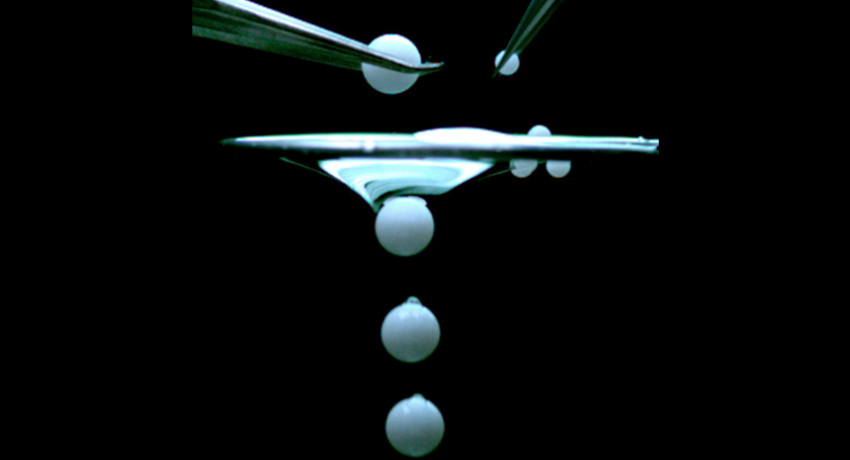Large particles pass through reverse liquid filter while smaller particles remain behind. Image: Tak-Sing Wong Lab
By Erin Cassidy Hendrick
A self-healing membrane that acts as a reverse filter, blocking small particles and letting large ones through, is the "straight out of science fiction" work of a team of Penn State mechanical engineers.
"Conventional filters, like those used to make coffee, allow small objects to pass through while keeping larger objects contained," said Birgitt Boschitsch, graduate student in mechanical engineering.
She and the research team, however, developed the exact opposite, a stabilized liquid material that screens out smaller objects while allowing larger ones to pass through. The research was published today (Aug. 24) online in Science Advances.
The team experimented with liquids for their unique properties.
"If you put your finger in a glass of water and take it out, the water's surface self-heals," explained Tak-Sing Wong, the Wormley Family Early Career Professor and assistant professor of mechanical and biomedical engineering.
This newly developed membrane does the same, but unlike conventional filters, this one does not separate objects by size. Instead, it responds to an object's kinetic, or movement, energy.
"Typically, a smaller object is associated with lower kinetic energy due to its smaller mass," Wong said. "So, the larger object with a higher kinetic energy will pass through the membrane, while the smaller object with lower kinetic energy will be retained."
In addition, the membrane wraps around the object as it passes through, allowing the membrane to completely self-heal over the top of the object passing through it.
In its simplest form, the membrane can be created with water and a substance that stabilizes the interface between liquid and air, and has a structure similar to that of a biological cell membrane. To create the initial prototype, the team used a simple soap film. The components could then be modified and optimized to serve unique purposes, such as enhanced mechanical robustness, antibacterial properties, or odor-neutralization.
"You could add components that make the membrane last longer or components that allow it to block certain gases," Boschitsch explained. "There are endless potential additives to choose from to tailor a membrane to the application of interest."
Looking ahead, the researchers envision any number of creative, real-world applications for the membrane. If doctors need to perform open surgery without a clean operating room, a potential situation in remote areas or on military battlefields, this material could act as a surgical film to help replicate the clean environment needed to safely operate.
Original Study: Science Advances
Read the full news story here:
https://news.psu.edu/story/533260/2018/08/24/research/self-healing-reverse-fi...

